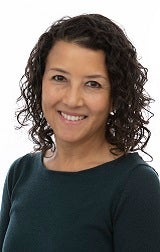Sleep Safety for your Baby
October 23, 2024
If you could potentially save the life of an infant by doing one simple thing, would you?
According to the Centers for Disease Control and Prevention (CDC), there were 3,700 sudden unexpected infant deaths (SUID) in the United States in 2022 – 1,529 of which were due to sudden infant death syndrome (SIDS), and 1,040 were from accidental suffocation and strangulation in bed. The remaining causes of death were unknown.
SIDS vs SUID – What is the difference?
SUIDs is used to describe any sudden and unexpected death during infancy (under the age of 1 year), whether or not the cause is eventually identified. SIDS is a sudden, unexpected infant death that cannot be explained even after a thorough investigation, medical history and autopsy, and is a subcategory of SUID. Therefore, SUID includes all causes including accidental suffocation, strangulation, as well as SIDS.
The Triple-Risk Model
The most widely accepted model for understanding SIDS is known as the triple-risk model. The first risk factor is the critical developmental period – the first year of life. 90% of unexpected infant deaths during sleep occur during the first six months of life, with a peak at 2-4 months of age. Infants transition from the womb, a sterile environment, to the world where they are immediately exposed to a host of disease-causing organisms. At birth, approximately 80% of an infant’s body weight is water. For an infant born weighing 7 pounds, 5.6 pounds of their body is water. Soon after birth, fluids and electrolytes begin to shift as the kidneys begin to filter the blood more efficiently. Infants also grow at a tremendous rate. On average, infants double their birthweight by four months of age. I can’t imagine the stress my body would be under if I doubled my weight in four months.
The second risk factor is related to outside stressors. Outside stressors are those environmental factors in the physical environment that make it harder for a vulnerable infant to survive. Outside stressors are usually modifiable, meaning we have some control or ability to change the risk factor. Outside stressors for infants include sleeping face down on their stomachs, exposure to tobacco smoke, risk of infection, sleeping on a soft surface, overheating or co-sleeping with a parent, caregiver or sibling. We can modify or control a number of things. Sleep position – we can place infants to sleep on their backs. We can reduce, or preferably, eliminate exposure to tobacco smoke. When possible, we can provide breast milk to bolster an infant’s immune system. We can avoid over bundling so that infants don’t overheat. And, we can have infants sleep alone, in a bassinet or crib without added pillows, blankets or stuffed animals to avoid risk of asphyxiation.
The third risk factor, as mentioned, is vulnerability. Many of us slept or placed our own infants in unsafe sleep environments – we co-slept, over-bundled, tummy slept and had cribs lined with bumpers and full of stuffed animals. Many of us were not breastfed nor were our children. And, many of us were exposed to, or our children were exposed to, external stressors such as tobacco smoke. But we survived our first year of life --a critical developmental period. Although we slept in those unsafe environments and were exposed to additional external stressors, we survived because we did not have the third factor of vulnerability. The challenge with vulnerability is that, when looking at otherwise healthy appearing infants, it is impossible to tell which baby is vulnerable. Therefore, we must assume that all infants are vulnerable.
Back to the Question
If you could potentially save the life of an infant by doing one simple thing, would you? If the answer is yes, here is what you can do.
If you care for an infant under the age of 1 year, follow the ABCs of safe sleep: Alone, on their Back and in a Crib. If you work with infants, educate yourself and their caregivers about the ABCs of safe sleep. And, if you are in a position to help, one can purchase and provide safe sleep environments for infants in need.
Safe sleep information and resources can also be found here.
About the Author
Dr. Carmela Sosa has practiced pediatrics in both the urban and rural health settings – always focused on children with special healthcare needs and pediatric mental health. She joined Valley Children’s Charlie Mitchell Children’s Center in April 2012 to provide complex primary care to children of the Valley. Her roles expanded in 2016 to include Associate Program Director of the Valley Children’s Pediatric Residency Program, and again in 2019 to Medical Director of Valley Children’s Primary Care and Medical Director of the Guilds Center for Community Health.
